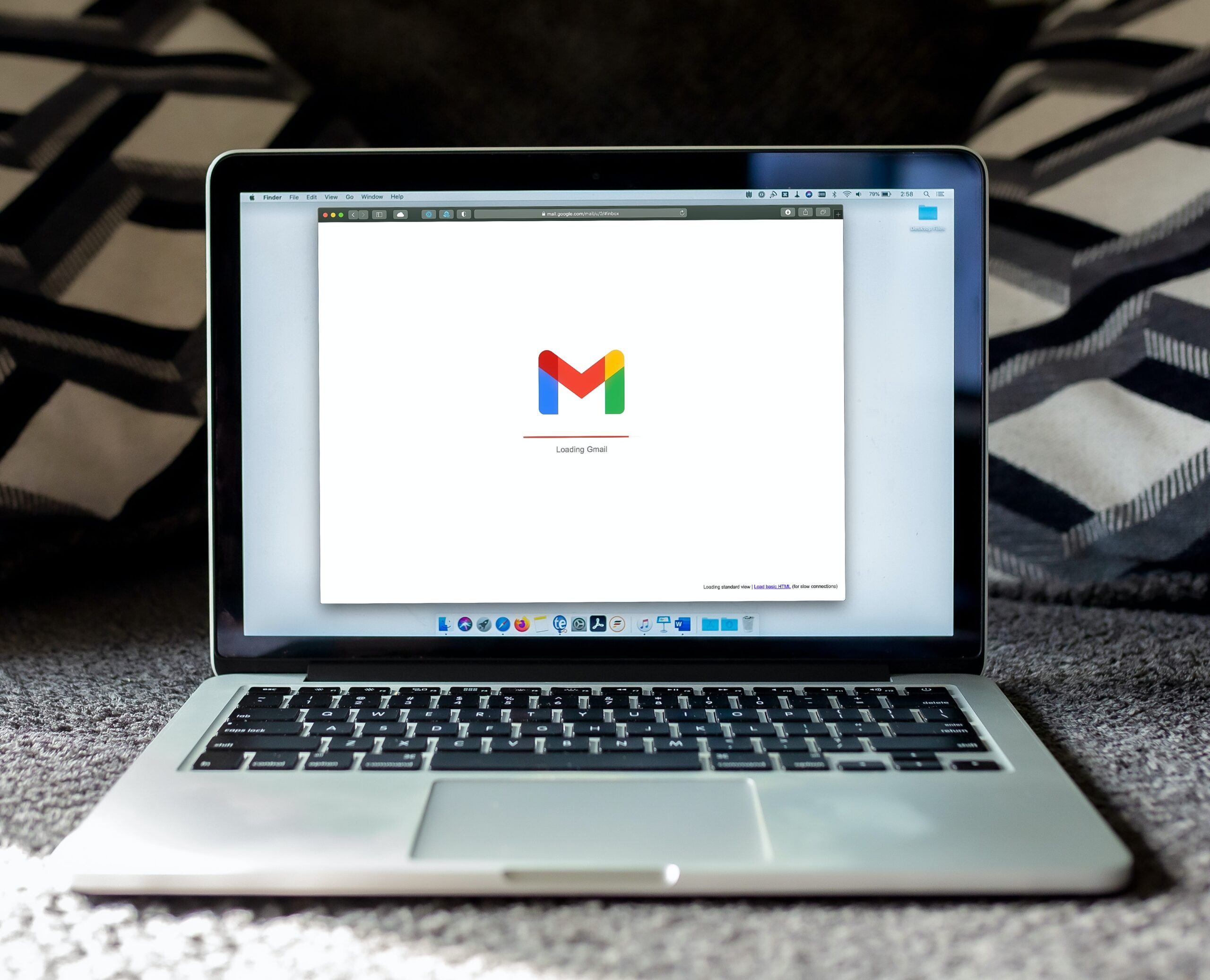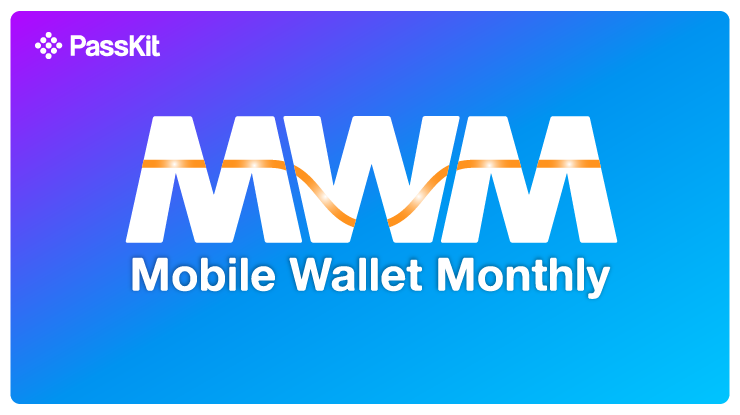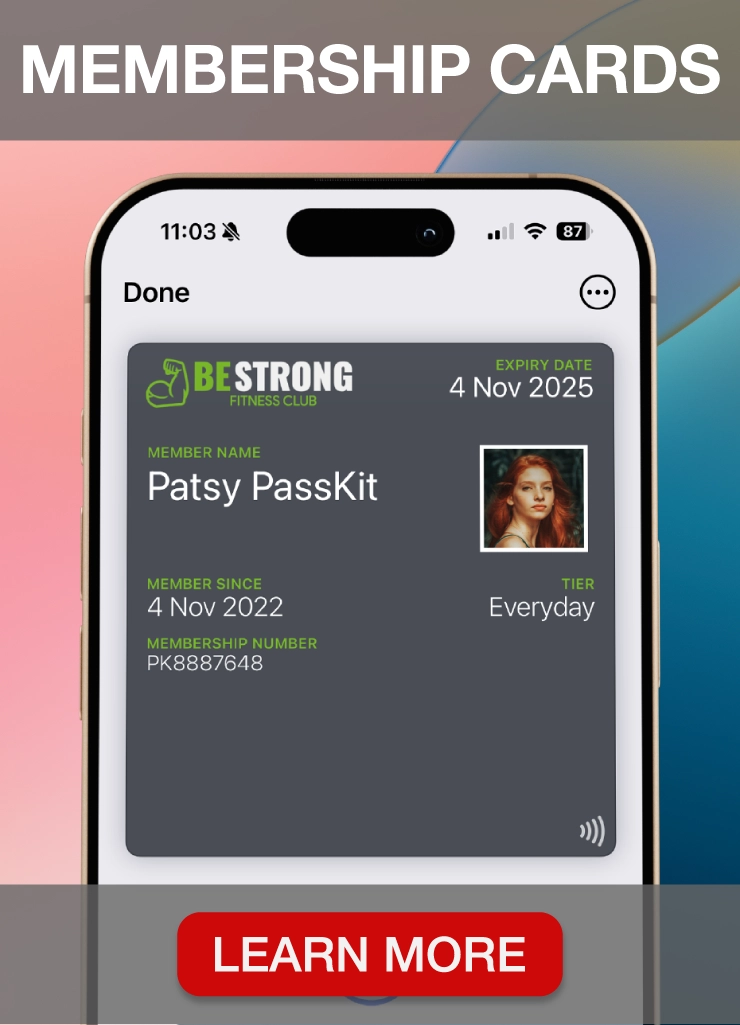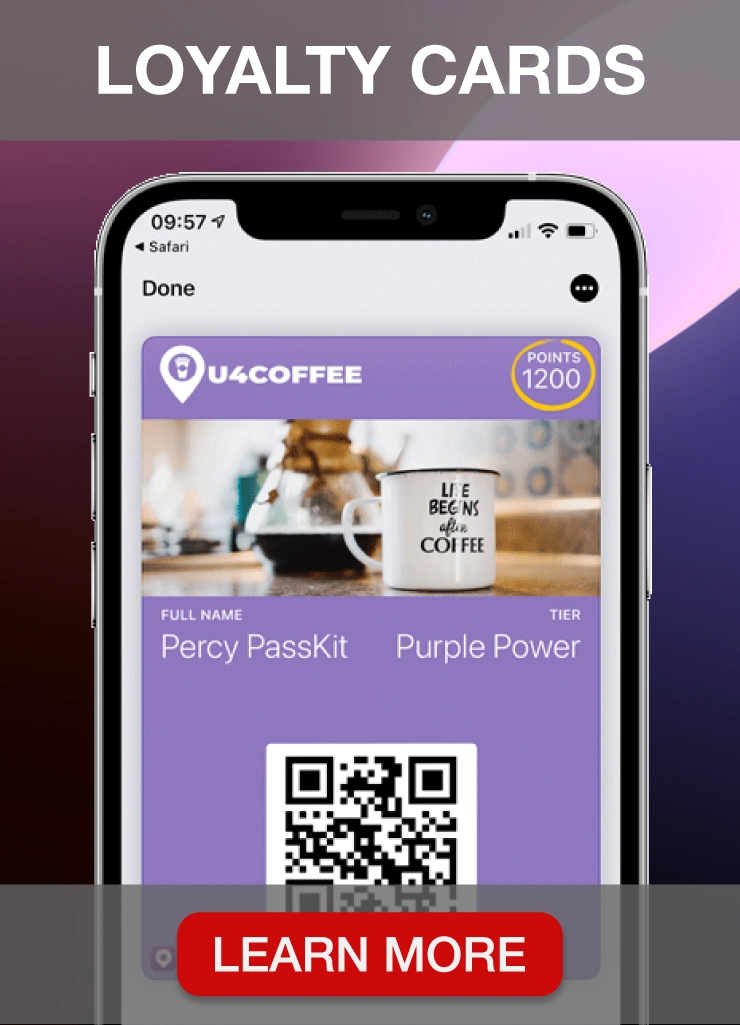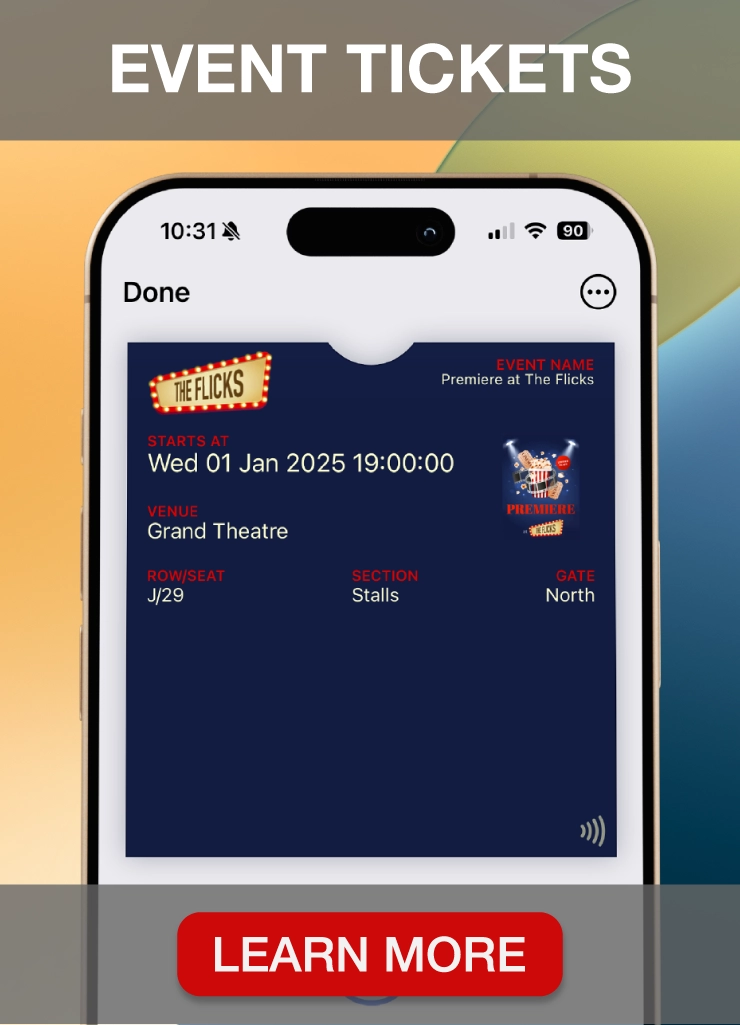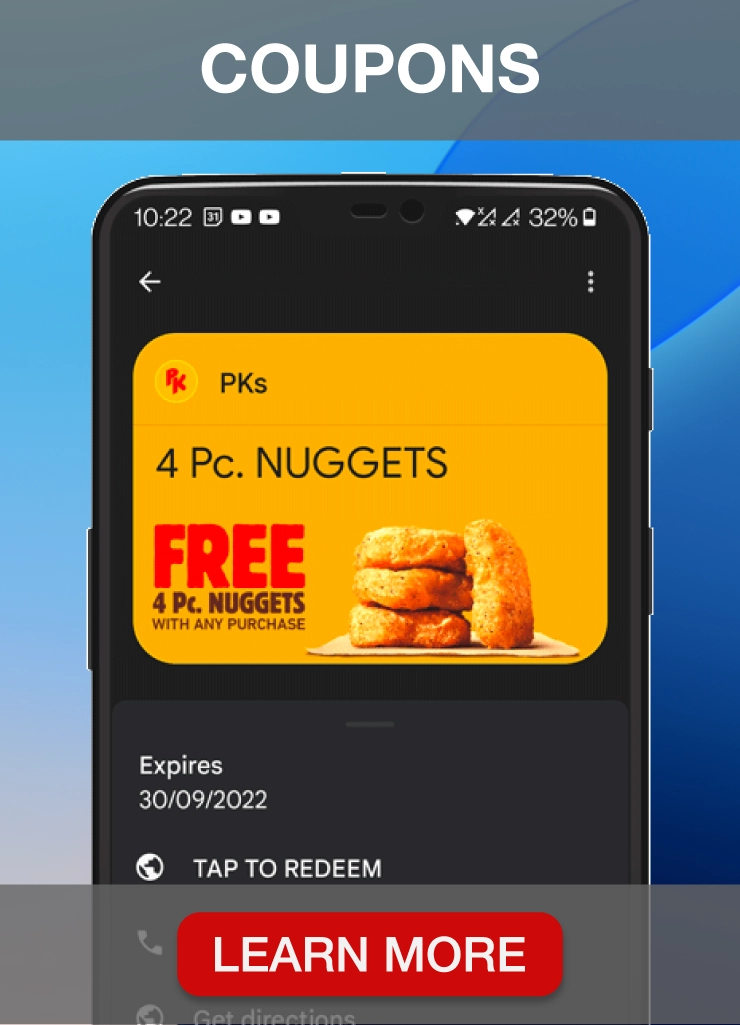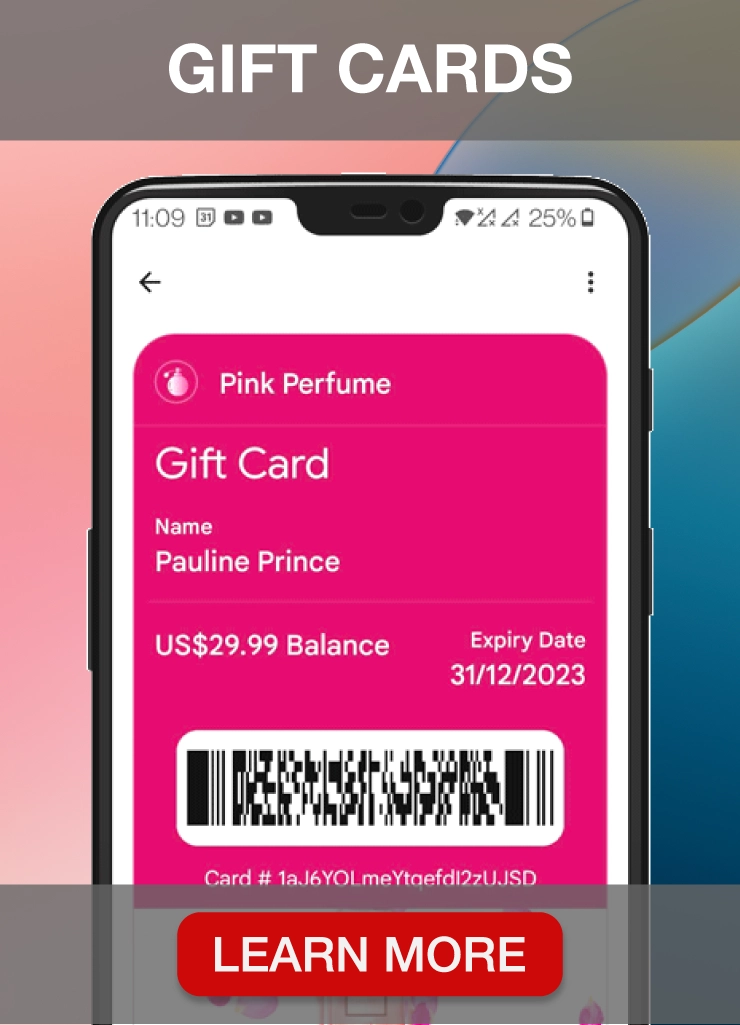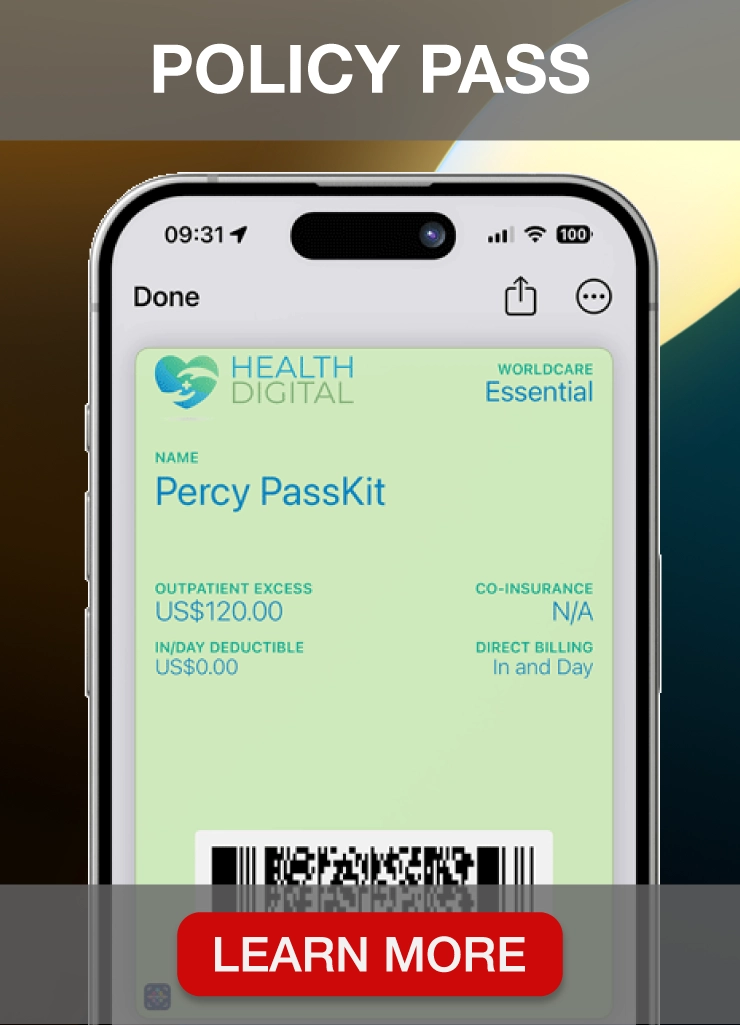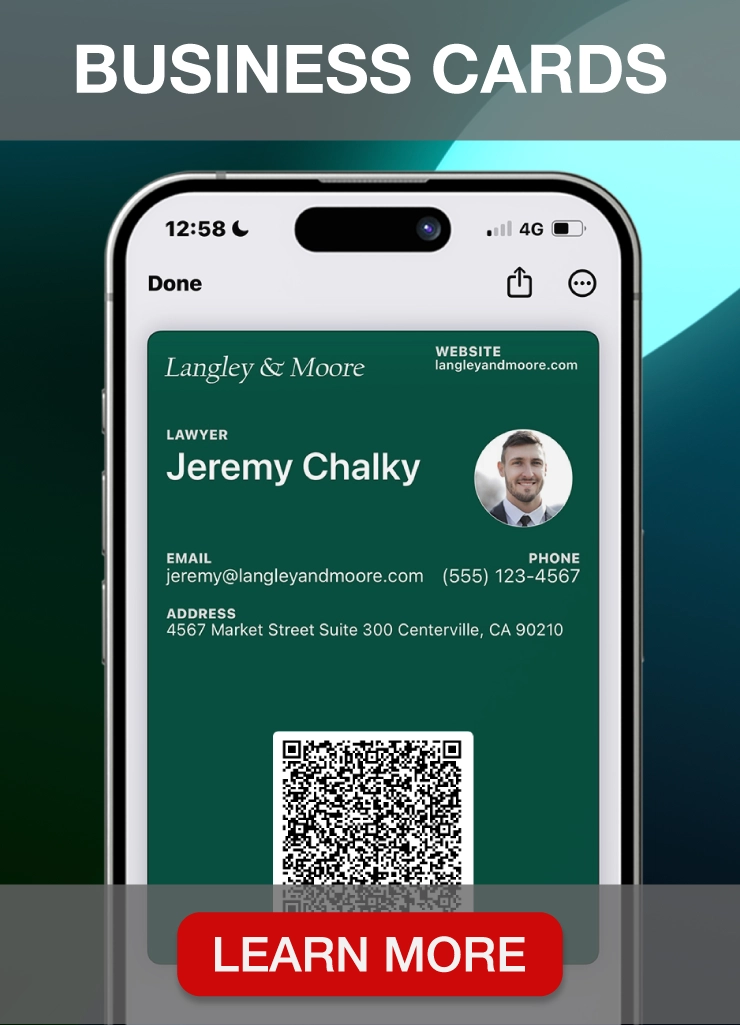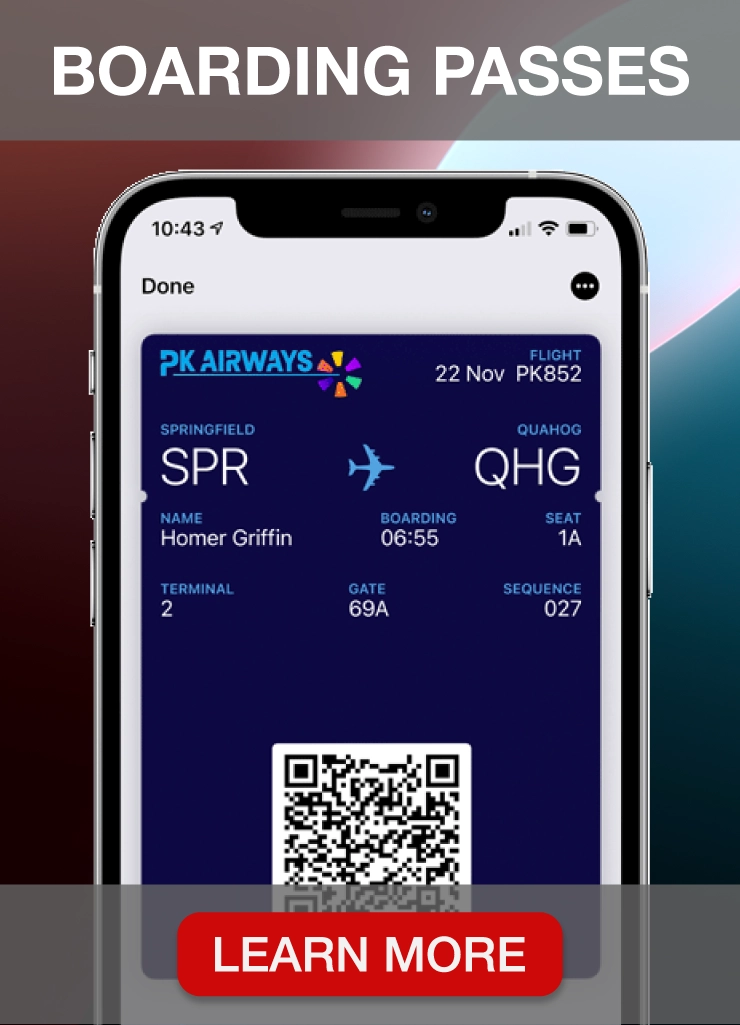Is there any point in having a loyalty program if you don’t advertise it? If you don’t promote your loyalty program, users will probably forget they signed up.
You need proper software and a well-thought strategy to keep your customers engaged. You should also incentivize users to redeem their rewards as active users spend 25% more than inactive members of your loyalty program.
PassKit, our digital loyalty platform, helps you create digital loyalty cards, membership cards, and coupons in minutes. With PassKit, you can promote and distribute digital passes on multiple channels, including text messages and emails. What’s best, you can track your redemption rates and assess areas for improvement. If you want to see how it works, sign up for our 45-day free trial.
If you are evaluating texting vs. email for your loyalty program promotion, you probably wonder which marketing channel will bring you better results. In this article, we will provide detailed texting vs. email comparison to help you choose the most reliable method of communication with your loyalty program members. We will also show you how to use PassKit to combine these channels and boost your marketing efforts.
Let’s start with some statistics to uncover the existing consumer trends and behavior.
Texting vs email: What stats show us in 2022
Image source: Finances Online
When you research whether text messaging or email is a better method for promoting your loyalty program, you will discover plenty of stats to back up both approaches, making it challenging to choose one for your business.
Stats about texting show us the following:
- There is a considerable difference in open rates between email and text messages. The average open rate of email is 20%, while SMS messages have an open rate of 98%
- Most consumers receive 72 SMS messages daily. A typical office worker deals with 121 emails a day
- 85% of smartphone users prefer to receive an SMS rather than an email
- 74% of people don’t have any unread text messages, while only 17% of people don’t have any unread emails
- On average, people send 25% more text messages than emails
These stats work in favor of using email as a marketing channel:
- 37% of respondents think email is the most effective channel for boosting customer loyalty and retention
- The estimated ROI for the email marketing channel is 400%
- According to predictions, email marketing revenue will reach nearly $11 billion by the end of 2023
- 37% of brands are increasing their email budget
- 41.5% of brands claim that email marketing is crucial for brand success
If it’s hard to decide which method is better based on stats, let’s examine the specifics of both communication channels to determine the winner.
Texting vs email: What are the similarities?
The main similarity between texting and email is that both are digital communication channels.
Businesses use email and SMS marketing to reach their target audience, communicate with customers, and promote products or services. It helps them exchange information with others in a quick, easy, convenient, and personal way.
Your customers can check text and email messages wherever they are since they receive both on their mobile devices. They can connect and communicate with your brand anytime using these two channels.
But apart from these similarities, emailing and texting have many differences. Let’s look at some of the most important ones.
Texting vs email: The key differences you need to know
Image source: unsplash.com
There are pros and cons to texting and email, but the key difference is in their use. Let’s explore how these two communication channels differ.
1. Connectivity and availability
You need a stable Internet connection to send an email or a newsletter. However, you can send and receive text messages anytime, even if you don’t have Internet access, as transmitting text messages requires only a cellular network.
2. Features
Email provides advanced features that SMS messages lack, including various file types as attachments, sending a long text in a single message, using folders and tags to organize messages, and others.
3. Voice and tone
Emails are more formal, starting with a personalized greeting and ending with a signature. Text messages are more informal. It’s a conversational method of communication that gives a sense of urgency and often involves more casual language and the use of emojis.
4. Deliverability
Though spam filters for SMS messages are improving, only 3% of text messages are considered spam compared to 85% of spam messages in email communication.
5. Click-through rate
Compared to any other digital channel, the CTR for SMS marketing is 9.18% higher, while a good click-through rate for emails is above 3 %.
6. Devices
The recipient can read SMS messages only on their mobile phones, while to read an email, they can use a desktop computer and various mobile devices like laptops, tablets, and mobile phones.
7. Customization
While you can send images and gifs using MMS, text messages give you hardly any options to style the content. Email is much more visual, providing you with various options to style your message and stand out from competitors.
8. Security
SMS messages are generally safe. The cellular network that is the basis for sending text messages doesn’t allow the spread of malware.
Viruses are often spread through an internet connection. Therefore, emails are more susceptible to spreading malware than SMS messages. Any attachments or links in an email are a potential source of danger.
To see the difference between texting and email more clearly, check our comparison table.
| SMS | ||
| Connectivity and availability | cellular network | internet connection |
| Platform dependence | platform independent | requires email client, a web interface, or a mobile app to communicate |
| Advanced features | quick and simple; limited to 160 characters | possibility to add attachments and send long text in one message |
| Voice and tone | informal way of communication | more sophisticated, often used for business communication |
| Deliverability | 3% of text messages are considered spam | 85% of messages are considered spam |
| Click-through rate | 9.18% higher than any other marketing channel | a good click-through rate is above 3% |
| Devices | mobile phones | desktop computers, laptops, tablets, and mobile phones |
| Customization | possible to send gifs and images but not possible to style the text | various options to style the marketing message |
| Safety | more secure | less secure |
Why use email for your loyalty program?
Email marketing helps you improve customer engagement, increase customer retention, and gain new customers. Unlike other marketing channels, email allows for deep personalization and thus empowers you to make your customers feel valued and increase their emotional connection with your brand.
Loyalty emails differ from regular emails. They are even more personalized and better resonate with customers interested in receiving discounts and rewards as a part of the loyalty program they take part in. Whenever you send notifications about rewards or reminders about the benefits of your loyalty program, you can be sure your emails will be welcome.
When to use email for loyalty marketing
Image source: mailcharts.com
You don’t want to overload your customers with messages. We all know that too much information can be tiring. Therefore, you should carefully choose the time and context of your messages, avoiding frequent communication that might irritate your customers. Use emails to engage customers wisely in the following ways.
1. Reminders about available rewards
Did you know that, on average, only 13.67% of rewards get redeemed? The most common reason is forgetfulness. Thus, sending reminders about rewards is a highly effective way of keeping your customers engaged between purchases. You can also send them a point balance statement to encourage them to revisit your business.
2. Redemption confirmation
After a loyalty program member redeems their points for a reward, you should also send them an email confirmation that their redemption was successful. Apart from showing them how many points they have redeemed, you can also inform the users about the remaining points balance, the number of points they need to reach the next tier, or what rewards are available.
3. Birthday rewards
It’s a good practice to send your loyalty program members genuine birthday wishes, including a small gift like a coupon code. These emails help increase the emotional connection with your brand. Also, stats show that the transaction rate of birthday emails is 481% higher than that of promotional emails.
4. Summary emails
At the end of each month, send out summary emails, including the number of loyalty points your customers have earned, the number of points used, and the current balance. If you use a tiered loyalty program, include the information about tier changes.
5. Loyalty program updates
If you make any changes to your loyalty program, don’t forget to inform your loyalty program members. Maybe you have included a new tier or developed a new way to earn points – notify all members about that.
Why use text messaging for your loyalty program?
If email marketing is so effective and convenient for promoting your loyalty program, why should you consider SMS messaging? Well, you don’t want to miss the efficiency that text messaging provides.
The click-through rates in SMS marketing can reach 36% for e-commerce brands. Still, many marketers are unaware of the power of SMS marketing, and 61% don’t use it.
A significant benefit of texting is its instant nature. While many emails stay unopened, 60% of people read an SMS within 5 minutes after getting it. Since this method is familiar and personal, text messages make a perfect choice as a channel of loyalty program promotion.
Another reason to use texting for your loyalty program is that SMS helps you resolve the problem of low customer engagement. An average person is a member of 15 loyalty programs but is only active in 7. SMS enables you to provide a more personalized experience, tailor your offers to answer customers’ needs, and increase engagement rates.
When to use text messaging for loyalty program promotion
Image source: eztexting.com
Using texting for your loyalty program is a cost-effective way to increase foot traffic in your business. Here are some SMS tactics you might want to apply to your brand.
1. Thank you messages
Show your customers appreciation when they sign up for your loyalty program by sending them a thank you SMS with a special offer or information about upcoming products or services. It is significant for developing a strong customer relationship with your brand.
2. Special offers
Make your loyalty program members feel they are a part of an exclusive club by sending messages with special offers at a specific interval, like a week or a month. It’s a great way to increase customer loyalty and entice them to buy from you again.
3. Coupon codes
Short messages are an excellent channel for sending your customers coupon codes. A short code sent in a text message will be an incentive to revisit your store. You can also use the power of geo-targeting to reach your customers with a coupon code when they enter a specific radius.
Have you decided which channel – texting or email – will better serve your loyalty program promotion? The decision might be challenging since both channels have solid advantages, so there is no clear winner.
But we have a brilliant solution for you: if you use PassKit to create and distribute your loyalty program, you don’t have to choose one channel for promotion. You can combine texting and email to boost your marketing efforts. Let’s explain how PassKit works.
How PassKit helps you combine text messaging with email marketing
PassKit is customer loyalty software that allows you to create and launch loyalty programs fast. When you log in to the PassKit dashboard, you can use our loyalty card templates to design your loyalty cards according to Apple Wallet and Google Pay requirements. Your customers can install loyalty cards and store them in their built-in mobile wallet – Apple Wallet or Google Pay.
The digital loyalty card is very safe, easy, and convenient to use. It allows customers to collect points over time and see all their rewards in one place. They can use the card whenever they visit your store, restaurant, hotel, or gym – by placing their smartphone over an NFC payment terminal, and with only a few taps on their phones, they can redeem rewards or collect more points.
The PassKit platform allows you to use texting and email to distribute your digital loyalty cards. Let’s see how it works in more detail.
Distribution via SMS
Once the customers have opted in for your loyalty program, you can send text messages with the URL of their digital pass, so they can easily install the card on their mobile devices with a single tap. The customers will receive the message on their mobile phones, so they can immediately activate the offer. It is a significant advantage.
When you send text messages to promote your loyalty program, remember to use personalization and explain to your customers that once they sign up and tap on the URL, they will save the pass to their digital wallet.
Distribution via email
You can also use the flexibility of email to promote your loyalty program and tailor your message to suit various audience segments. This way, you will increase the download rates of your digital loyalty cards.
If you have an email list of your customers, the process will be even easier – all you have to do is send them electronic messages with a personalized digital pass. After the customers click on the link or the “Add to Phone” button, they will have their loyalty cards installed, and their membership in the loyalty program will be active.
Your email should also include a QR code, so those customers that read it from their computer can scan it and seamlessly add the pass to their digital wallet.
When the customers opt-in for your loyalty program based on the PassKit platform, they give you consent only once to send them marketing materials via multiple distribution channels, so you are not constrained to one channel.
Apart from using texting and email to distribute loyalty cards, you can also promote them through channels like social media, apps, receipt marketing, in-store advertising, POP marketing, NFC payment terminals, and many more.
Texting vs email: Wrapping up
Businesses successfully use both texting and email for marketing communications with their customers. While SMS marketing is a younger method of business communication and can reach customers on a more personal level, one cannot deny the effectiveness of old good email marketing.
Each of these methods might be more useful depending on the context and the nature of your business, so you might have a hard time if you really need to choose one over the other.
Luckily, if you decide to design your loyalty program using PassKit, you will see that the convenience of PassKit goes far beyond creating loyalty cards in only a few minutes. Our platform allows you to use various marketing channels to promote and distribute your loyalty program, including SMS and email. If you get customers’ permission to send them promotional material, you can use PassKit to communicate with them through different channels and increase the effectiveness of your marketing efforts.
Our solution saves you a lot of time: you don’t have to look for an email marketing platform or SMS marketing software, nor do you need to hire graphic designers or programmers to create your loyalty program. All you have to do is log in to the PassKit platform, follow a few simple steps, and your loyalty program is up and running. Sign up for our 45-day free trial to see how easy it is.
Texting vs email: FAQ
Here are the answers to some commonly asked questions to explain the difference between the two modes of communication.
Which is safer: email or text message?
Since electronic mail requires an internet connection, there is a risk of spreading malware through emails. It is easy to add website links and attachments to email; viruses, trojan horses, and worms can enter your mobile device or computer when you click on them. Viruses can also be in the mail itself, and since they are hard to detect, emails are not the most secure mode of communication.
Text messages are based on a local cellular network, meaning the connection cannot be used to spread malware. Since SMS containing only text is safe, text messaging is more secure than electronic mail.
You can open text messages without worries, but be careful about links that the SMS might contain. By clicking on a link, you can install something unsafe on your mobile phone, or it can redirect you to an insecure page.
Is texting more personal than email?
Many people use email for business since electronic mails allow you to add attachments. The written trail of correspondence that email leaves is very useful and can even be utilized for legal purposes.
Sending emails is a more desirable form of communication in the business world because you can easily print them from a computer and have more graphic design options, making it possible to create eye-catching newsletters.
Texting is a more personal way of communication. It’s much quicker to send and receive texts, and this method of communication is more likely to allow conversation in real-time. Texts are often used to communicate important information. Since they show on the mobile phone immediately, people see SMS sooner than email.
